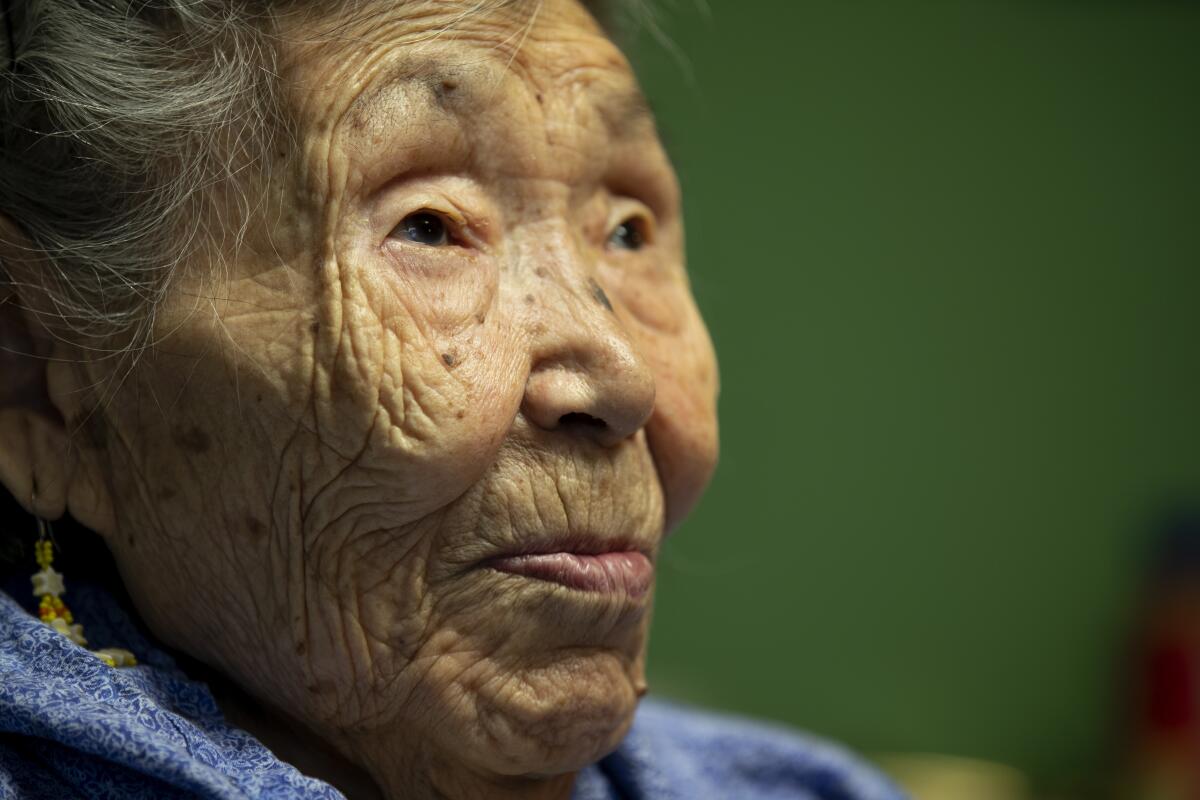Baby boomers push nation’s median age to almost 39 as fewer children are born

- Share via
The United States grew older, faster, during the last decade.
The share of residents 65 or older grew by more than a third from 2010 to 2020, and at the fastest rate of any decade in 130 years, while the share of children declined, according to new figures from the most recent U.S. census.
The declining percentage of children under age 5 was particularly noteworthy in the figures from the 2020 head count released Thursday. Combined, the trends mean the median age in the country rose from 37.2 to 38.8 over the decade.
America’s two largest age groups propelled the changes: more baby boomers turning 65 or older and millennials who became adults or pushed further into their 20s and early 30s.
Also, fewer children were born between 2010 and 2020, according to numbers from the once-a-decade head count of every U.S. resident. The decline stems from women delaying having babies until later in life, in many cases to focus on education and careers, according to experts, who noted that birth rates never recovered following the Great Recession of 2007-2009.
“In the short run, the crisis of work-family balance, the lack of affordable child care, stresses associated with healthcare, housing and employment stability, all put a damper on birth rates by increasing uncertainty and making it harder to decide to have and raise children,” said Philip Cohen, a sociologist at the University of Maryland.
The number of babies born in the U.S. last year fell 4% compared with 2019 as the nation’s birth rate fell to another record low.
There are important social and economic consequences to an aging population, including the ability of working-age adults to support older people through Social Security and Medicare contributions. The Census Bureau calculates what is known as a dependency ratio, defined as the number of children plus the number of seniors per 100 working-age people. While the dependency ratio decreased for children from 2010 to 2020, it increased for seniors by 6.8 people.
At the top end of the age spectrum, the number of people over 100 increased by half, from more than 53,000 people to more than 80,000. The share of men living into old age also jumped. Both groups benefited from a century of vaccines and antibiotic developments, improvements in surgery and better treatment of diseases, said Dr. Thomas Perls, a professor of medicine at Boston University.
“Many more people who have the genetic makeup and environmental exposures that increase one’s chances of getting to 100, but who would have otherwise died of what are now readily reversible problems, are able to fulfill their survival destiny,” Perls said.
The Census Bureau released two earlier data sets from the 2020 census in 2021: state population figures used to decide how many congressional seats each state gets and redistricting numbers used to draw political districts.
The U.S. Census Bureau released apportionment data, but the pandemic-induced lag has already caused ripple effects on redistricting and 2022 races.
Thursday’s data release was delayed by almost two years because of pandemic-related difficulties gathering the information and efforts by the Census Bureau to implement a new, controversial privacy protection method that uses algorithms to add intentional errors to obscure the identity of any given respondent.
This was the first census since the U.S. Supreme Court legalized same-sex marriage in 2015. The tally showed that more than half of U.S. households were coupled households, where partners or spouses live together, and same-sex households made up 1.7% of coupled households. Since the census didn’t ask about sexual orientation, it didn’t capture LGBTQ+ people who are single or don’t live with a partner or spouse.
The median age varied widely by race and ethnicity. Non-Latino whites were the oldest cohort, with a median age of 44.5. Latinx Americans were the youngest, with a median age of 30; and a quarter of all children in the U.S. had Latinx heritage. Black Americans who weren’t Latinx had a median age of 35.5. The number was for 37.2 for Asian Americans.
Utah, home to the largest Mormon population in the U.S., was the youngest state, with a median age of 31.3, a function of having one of the nation’s highest birthrates. The District of Columbia’s median age of 33.9 was a close second due to the large number of young, working-age adults commonly found in urban areas. North Dakota was the only state where the median age declined, from 37 to 35.8, as an influx of young workers arrived to work in a booming energy sector.
Maine was the oldest state, with a median age of 45.1, as more baby boomers aged out of the workforce. Puerto Rico had a median age in the same range, at 45.2, as an exodus of working-age adults left the island beset by a series of hurricanes and government mismanagement. Older adults in four states — Florida, Maine, Vermont and West Virginia — made up more than a fifth of those states’ populations.
The state’s major cities lost people between 2020 and 2022, especially in Northern California. But exurban boomtowns, including some Southern California areas, saw gains.
Sumter County, Fla., home of the booming retirement community The Villages, had the highest median age among U.S. counties, at 68.5; while Utah County, home to Provo, Utah, and Brigham Young University, had the lowest at 25.9.
As one of the youngest baby boomers, Chris Stanley, 59, already lives in The Villages. She said her mission in later life is to let younger generations know they can effect change despite perhaps not having the same economic opportunities she did.
“I want to impart the urgency that I feel,” she said. “They can make it better.”
While people 65 and older made up 16.8% of the 331 million residents in the U.S. in 2020, the share was still significantly lower than in countries like Japan, Italy and Greece, where the age cohort makes up between more than a fifth and more than a quarter of the population. However, their share of the U.S. population will continue to grow as baby boomers age.
“In the long run, immigration is the only way the United States is going to avoid population decline,” Cohen said.
More to Read
Sign up for The Wild
We’ll help you find the best places to hike, bike and run, as well as the perfect silent spots for meditation and yoga.
You may occasionally receive promotional content from the Los Angeles Times.













